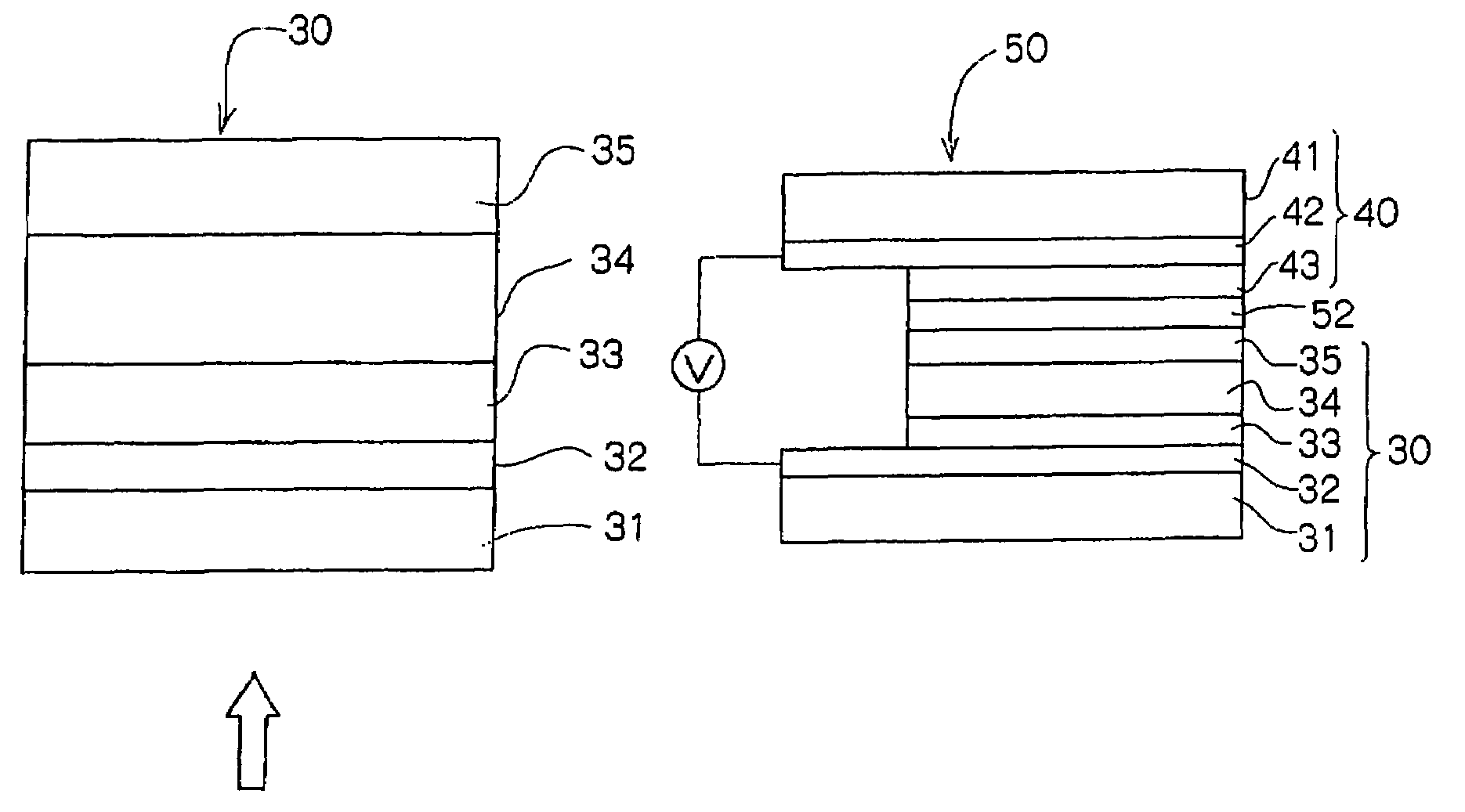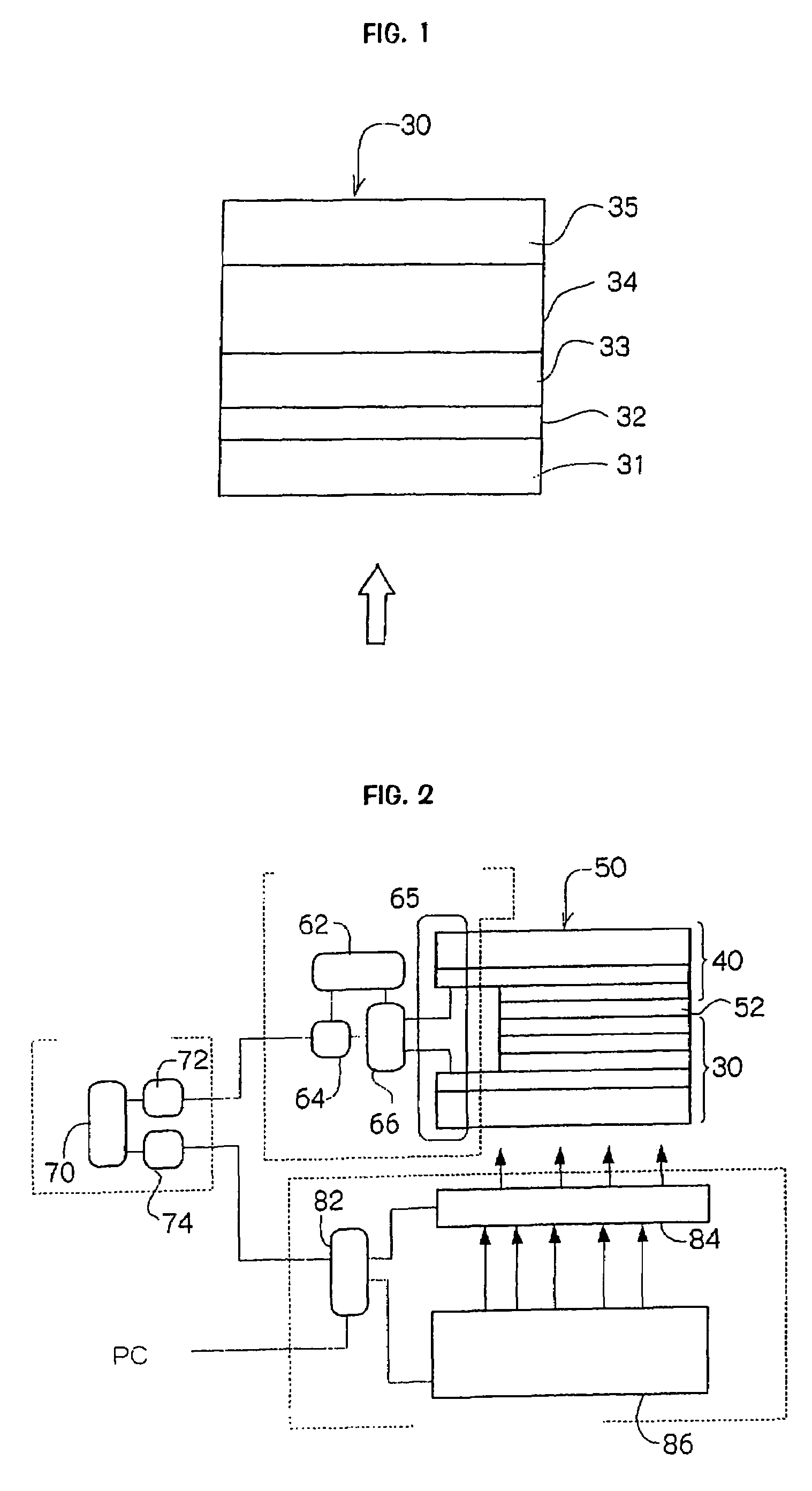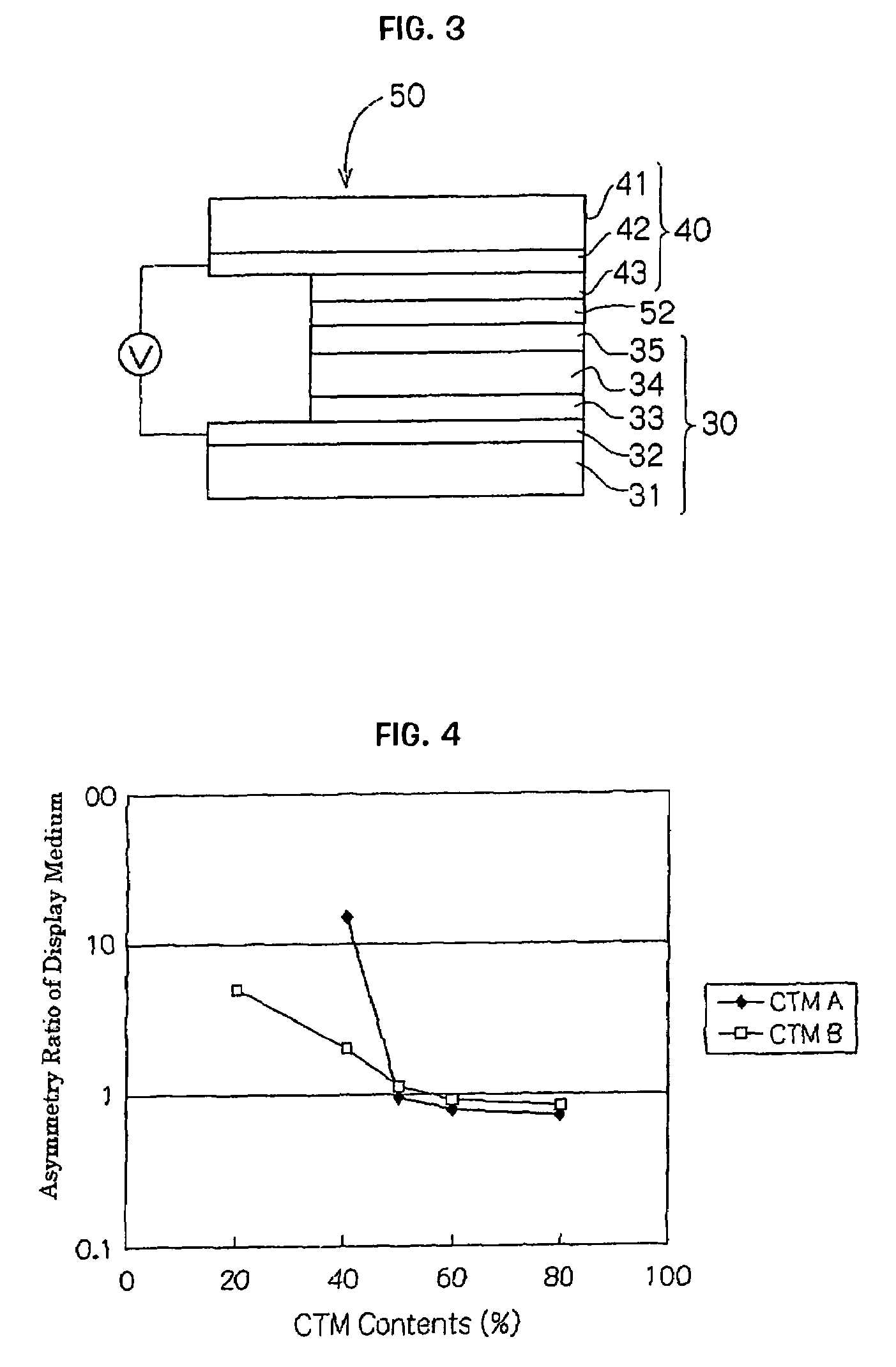Optical switching element, and device, optically addressed type display medium and display each using the optical switching element
a technology of optical switching element and optical address, which is applied in the direction of electrographic process apparatus, instruments, corona discharge, etc., can solve the problems of low ctm content layer (a ctm-poor layer), uneven ctm concentration distribution, and drift of applied voltage, so as to achieve the effect of suppressing asymmetry of electrical characteristics more effectively
- Summary
- Abstract
- Description
- Claims
- Application Information
AI Technical Summary
Benefits of technology
Problems solved by technology
Method used
Image
Examples
example 1
[0114]An optically addressed type display medium having the same structure as shown in FIG. 2 is prepared by the process as shown below.
[0115]The lower charge generating layer 33 is formed on an ITO film (800 Å in thickness), which is formed as the electrode layer 32 on a polyethylene terephthalate (PET) substrate 31 (125 μm in thickness). Specifically, the charge generating material used is hydroxygallium phthalocyanine with an ionization potential of 5.31 eV (having strong diffraction peaks in X-ray diffraction spectrum at Bragg angles (2θ±0.2°) of 7.0°, 7.5°, 10.5°, 11.7°, 12.7°, 17.3°, 18.1°, 24.5°, 26.2°, and 27.1°), and the binder resin used is polyvinyl butyral. The charge generating material and the binder resin are mixed in a weight ratio of 1:1 and dispersed in butanol to form a 2% by weight dispersion (Coating Liquid A). The dispersion is applied to the substrate by spin coating and dried to form the charge generating layer 33. The resulting charge generating layer 33 has...
example 2
[0136]Display media (C-1 and C-2) are produced according to the process of Example 1, except that some steps are modified as shown below.
Display Medium C-1 (Example of the Invention)
[0137]The lower charge generating layer 33 is formed as shown below. The charge generating material used is hydroxygallium phthalocyanine with an ionization potential of 5.31 eV (having strong diffraction peaks in X-ray diffraction spectrum at Bragg angles (2θ±0.2°) of 7.0°, 7.5°, 10.5°, 11.7°, 12.7°, 17.3°, 18.1°, 24.5°, 26.2°, and 27.1°), and the binder resin used is polyvinyl butyral. The charge generating material and the binder resin are mixed in a weight ratio of 1:1 and dispersed in butanol to form a 2% by weight dispersion (Coating Liquid C). The dispersion is applied to the substrate by spin coating and dried to form the charge generating layer 33. The resulting charge generating layer 33 has a light absorptance of 45%.
[0138]The charge transporting layer 34 is then formed as shown below A charge...
example 3
[0146]A display medium (D-1) is produced according to the process of Example 1, except that some steps are modified as shown below.
Display Medium D-1 (Example of the Invention)
[0147]The charge transporting layer 34 is formed as shown below. The charge transporting material used is a charge transporting polymer (Illustrative Compound (58)) synthesized by the process as shown below. The charge transporting polymer is dissolved in monochlorobenzene to form a 10% by weight solution. The solution is applied using an applicator (Gap: 100 μm) and dried to form the charge transporting layer 34 with a thickness of 7 μm on the lower charge generating layer 33.
Synthesis of Charge Transporting Polymer (Illustrative Compound (58))
[0148]To a 50 ml flask are added 2.0 g of 3,3′-dimethyl-N,N′-bis(3,4-dimethylphenyl)-N,N′-bis[4-(2-methoxycarbonylethyl)phenyl]-[1,1′-biphenyl]-4,4′-diamine, 4.0 g of ethylene glycol and 0.1 g of tetrabutoxytitanium and heated and refluxed under a stream of nitrogen for...
PUM
| Property | Measurement | Unit |
|---|---|---|
| thick | aaaaa | aaaaa |
| thick | aaaaa | aaaaa |
| Bragg angles | aaaaa | aaaaa |
Abstract
Description
Claims
Application Information
 Login to View More
Login to View More - R&D
- Intellectual Property
- Life Sciences
- Materials
- Tech Scout
- Unparalleled Data Quality
- Higher Quality Content
- 60% Fewer Hallucinations
Browse by: Latest US Patents, China's latest patents, Technical Efficacy Thesaurus, Application Domain, Technology Topic, Popular Technical Reports.
© 2025 PatSnap. All rights reserved.Legal|Privacy policy|Modern Slavery Act Transparency Statement|Sitemap|About US| Contact US: help@patsnap.com



